82 posts
Latest Posts by venusearthpassage - Page 2

A view of the Apollo 11 lunar module “Eagle” as it returned from the surface of the Moon to dock with the command module “Columbia”. A smooth mare area is visible on the Moon below and a half-illuminated Earth hangs over the horizon. The lunar module ascent stage was about 4 meters across. Command module pilot Michael Collins took this picture just before docking at 21:34:00 UT (5:34 p.m. EDT) 21 July 1969. (Apollo 11, AS11-44-6642)
Credit: Apollo 11, NASA

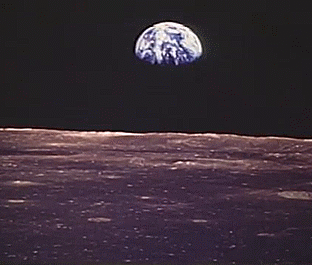
Apollo 11 Earthrise
Could we create dark matter?
85% of the matter in our universe is a mystery. We don’t know what it’s made of, which is why we call it dark matter. But we know it’s out there because we can observe its gravitational attraction on galaxies and other celestial objects.

We’ve yet to directly observe dark matter, but scientists theorize that we may actually be able to create it in the most powerful particle collider in the world. That’s the 27 kilometer-long Large Hadron Collider, or LHC, in Geneva, Switzerland.

So how would that work? In the LHC, two proton beams move in opposite directions and are accelerated to near the speed of light. At four collision points, the beams cross and protons smash into each other.

Protons are made of much smaller components called quarks and gluons.

In most ordinary collisions, the two protons pass through each other without any significant outcome.

However, in about one in a million collisions, two components hit each other so violently, that most of the collision energy is set free producing thousands of new particles.

It’s only in these collisions that very massive particles, like the theorized dark matter, can be produced.

So it takes quadrillions of collisions combined with theoretical models to even start to look for dark matter. That’s what the LHC is currently doing. By generating a mountain of data, scientists at CERN are hoping to find more tiny bumps in graphs that will provide evidence for yet unknown particles, like dark matter. Or maybe what they’ll find won’t be dark matter, but something else that would reshape our understanding of how the universe works entirely.
And that’s part of the fun at this point. We have no idea what they’re going to find.
From the TED-Ed Lesson Could we create dark matter? - Rolf Landua
Animation by Lazy Chief
Daily Science Dump: Kepler’s First Law Edition
Bonjour my science nerds. I got a question regarding Kepler’s Three Laws because they can be somewhat confusing. And tbh, they really are. Because they can be a bit of a pain, I’ve decided to break this up into 3 sections, one for each law. They generally follow the same idea: planetary orbits are not circular. The difference between each law resides in the minute details. And because they are really detailed, I wanted to make sure I covered everything of each law so they don’t get confused. Let’s get started!
Kepler’s First Law of Planetary Motion
History
Before we get into the actual laws, we need to understand why these laws are so important. During the 1500s and early 1600s, astronomy was starting to become a big deal. We were trying to figure out where we are in the universe. During this time period, the famous geocentric and heliocentric models were stirring up massive controversy in the Catholic Church (for obvious reasons). Ptolemy brought around the geocentric model, which put Earth at the center. This was a natural thought at the time because it was a religious concept that man was God’s greatest creation, so God would want to put man at the center of everything (little presumptuous on our part tbh). Next, Copernicus said that our Sun was in the center, and all the planets orbit around the sun. This clearly didn’t go down well with the Church because it was the first instance of defying the Catholic Church, therefore defying God. In an attempt to settle down the controversy, Brahe brought around a new theory model, putting the Earth at the center, having the Sun and Moon orbiting the Earth, and then the rest of the planets orbiting the Sun. It was a very far reached model but people bought it. All of these models had one thing in common; all the orbits of the planets were circular. But none of none of the actual data fit with perfect circular orbits. This is where our boi Kepler comes in.

It was long believed that the planets should orbit along circular paths, because a circle is considered an ideal shape. But as I mentioned before, none of the data was fitting the circular shape, particularly Mars. Kepler brought around another shape, the ellipse, to explain the missing pieces of the data. An ellipse is like a flattened circle with some important properties that Kepler used for his laws. His first law focuses more on explaining the patterns of elliptical orbits. The second and third law goes into more detail on the properties of elliptical orbits.
If you’ve taken a simple geometry class, you know the basic principles of ellipses. We know there’s a major-axis and minor-axis (the diameter horizontally and the diameter vertically), the focal points, and eccentricity. All of these are important for planetary orbits. If we take a trip back to geometry, we know that the positions of the focal points affect the eccentricity, which is basically how much it’s being squished (if e = 0 then it’s a perfect circle and if e = 1 it’s a parabola).
All of this geometry going on transfers over into planetary motion. In this case, the Sun acts as one of the focal points. The other focal point is merely imaginary. Mathematically it exists but there’s nothing at that point in space that says “Hey! I’m a focal point for Saturn!”. But we know for sure that the Sun is on of the two focal points. This revelation caused a lot of uproar and many refused to believe it. Partly because the orbit of a lot planets are so close to a perfect circle it’s extremely hard to tell it’s elliptical at all.
Eccentricity has to stay between 0 and 1, like I explained earlier. An eccentricity of 0 is a perfect circle. If it’s 1 or greater, it’s a parabola. For the planetary motion, most of the planets’ eccentricity doesn’t even crack 0.1 (Pluto has a bit over 0.2 but apparently Pluto isn’t a planet #JusticeForPluto). Earth’s eccentricity is currently 0.0167, which means its very very close to a perfect circle. But not quite. To be quite honest, the fact that Kepler was able to figure out that the orbits were not circular is astonishing.
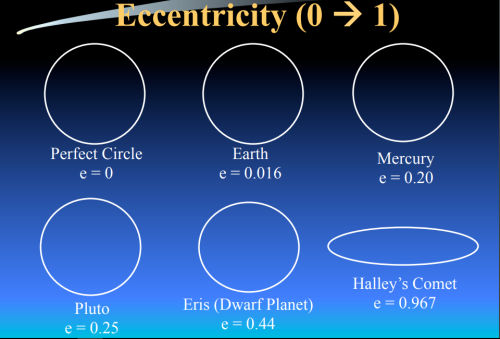
So that’s it for Kepler’s First Law of Planetary Motion! These laws were critical in understanding how our universe works and how our solar system plays out. It opened our eyes to many new ideas and thought processes. This law is just the first step of understanding the orbital tendencies of planets. On Friday, we will dive right into Kepler’s Second Law of Planetary Motion which goes into detail about the speed of the planet due to the elliptical orbit.
Don’t forget, I’m updating the Blog Website everyday with something new because I have no life…. I added cool space music! If you have any cool song recommendations for the playlist definitely shoot me a message!
If you have any questions about today’s Daily Science Dump or any past ones, don’t be afraid to ask!
As always,
Stay Nerdy!
R.L.
Solar System: Things to Know This Week
Go for Venus! Fifty-five years ago this week, Mariner 2, the first fully successful mission to explore another planet launched from Cape Canaveral in Florida. Here are 10 things to know about Mariner 2.
1. Interplanetary Cruise

On August 27, 1962, Mariner 2 launched on a three and a half month journey to Venus. The little spacecraft flew within 22,000 miles (about 35,000 kilometers) of the planet.
2. Quick Study

Mariner 2’s scan of Venus lasted only 42 minutes. And, like most of our visits to new places, the mission rewrote the books on what we know about Earth’s sister planet.
3. Hot Planet

The spacecraft showed that surface temperature on Venus was hot enough to melt lead: at least 797 degrees Fahrenheit (425 degrees Celsius) on both the day and night sides.
4. Continuous Clouds
The clouds that make Venus shine so bright in Earth’s skies are dozens of miles thick and permanent. It’s always cloudy on Venus, and the thick clouds trap heat - contributing to a runaway “greenhouse effect.”
5. Night Light

Those clouds are why Venus shines so brightly in Earth’s night sky. The clouds reflect and scatter sunlight, making Venus second only to our Moon in celestial brightness.
6. Under Pressure
Venus’ clouds also create crushing pressure. Mariner 2’s scan revealed pressure on the surface of Venus is equal to pressure thousands of feet under Earth’s deepest oceans.
7. Slow Turn
Mariner 2 found Venus rotates very slowly, and in the opposite direction of most planets in our solar system.
8. Space Travel Is Tough
Mariner 2 was a remarkable accomplishment, considering that in 1962 engineers were still in the very early stages of figuring out how operate spacecraft beyond Earth orbit. The first five interplanetary missions launched - by the U.S. and Soviet Union, the only two spacefaring nations at the time - were unsuccessful.
9. Not Ready for Its Close Up
Mariner 2 carried no cameras. The first close-up pictures of Venus came from NASA’s Mariner 10 in 1974.
10. Hot Shot

The first (and still incredibly rare) photo of the surface of Venus was taken by the Soviet Venera 9 lander, which survived for a little more than a minute under the crushing pressure and intense heat on the ground.
Make sure to follow us on Tumblr for your regular dose of space: http://nasa.tumblr.com
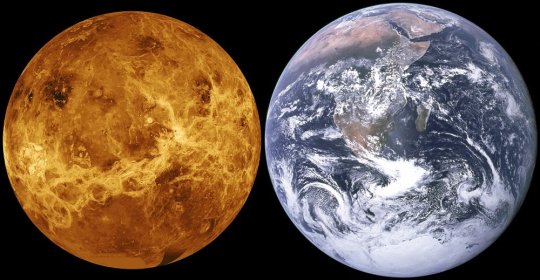
Information on the lack of a Venusian magnetosphere

(NASA) Venus at Night in Infrared from Akatsuki
Image Credit: JAXA, ISAS, DARTS; Processing & Copyright: Damia Bouic
Why is Venus so different from Earth? To help find out, Japan launched the robotic Akatsuki spacecraft which entered orbit around Venus late in 2015 after an unplanned five-year adventure around the inner Solar System. Even though Akatsuki was past its original planned lifetime, the spacecraft and instruments were operating so well that much of its original mission was reinstated. Also known as the Venus Climate Orbiter, Akatsuki’s instruments investigated unknowns about Earth’s sister planet, including whether volcanoes are still active, whether lightning occurs in the dense atmosphere, and why wind speeds greatly exceed the planet’s rotation speed. In the featured image taken by Akatsuki’s IR2 camera, Venus’s night side shows a jagged-edged equatorial band of high dark clouds absorbing infrared light from hotter layers deeper in Venus’ atmosphere. The bright orange and black stripe on the upper right is a false digital artifact that covers part of the much brighter day side of Venus. Analyses of Akatsuki images and data has shown that Venus has equatorial jet similar to Earth’s jet stream.
Source
Try bringing two of your fingers closer in the back drop of a light source and you would observe this:
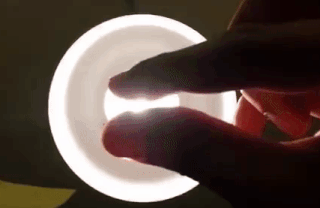
Long before your fingers actually touch, the edges magically seem to touch each other. How is this even possible?
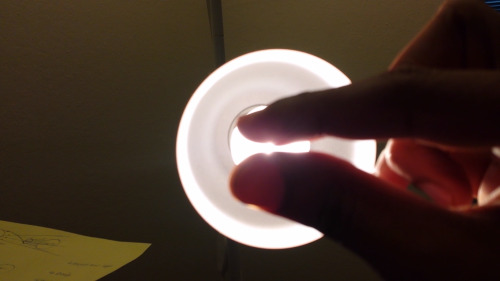
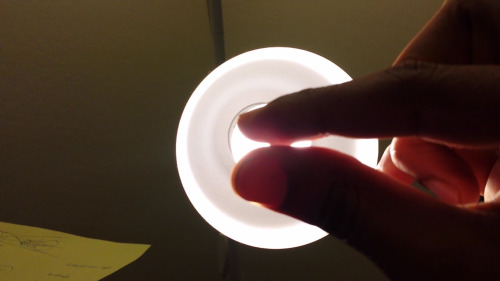
Transit of Venus
When scientists were observing the transit of Venus from Earth i.e when the planet Venus passes directly between the Sun and Earth,they faced a similar problem.
At the moment when Venus should nearly touch the edge of the sun, the circular planet began to elongate.
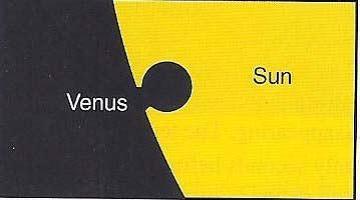
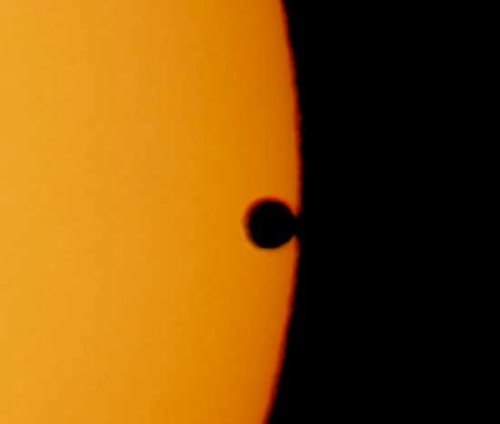
PC: NASA
And they noticed the same phenomenon for Mercury as well (which has no atmosphere).
What is causing this optical phenomenon?
The physics behind this beautifully bizarre optical phenomenon will be revealed tomorrow on FYP!.
But since this is something that you can all try at home, we strongly encourage you to play around with this and get a feel for it. It requires only your hands and a source of light.
Once you do, try to hypothesize a solution for this behavior.
Have fun!









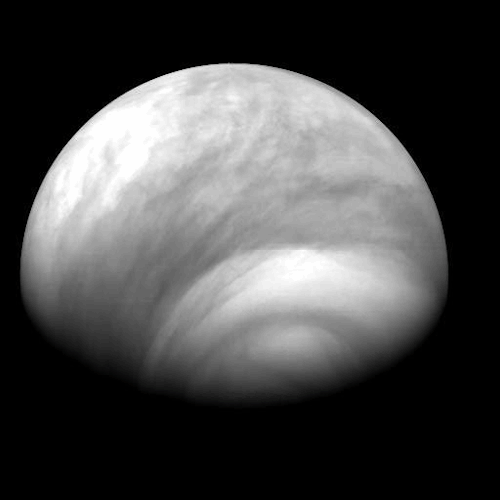
Sequence of Venus atmosphere images taken by the Venus Monitoring Camera (VMC) during the Venus Express orbit in July 2007. The view shows the southern hemisphere of the planet.
Credit: ESA/MPS/DLR/IDA

Venus as seen from the Mariner 10 probe taken in 1974
Solar System: Things to Know This Week
Go for Venus! Fifty-five years ago this week, Mariner 2, the first fully successful mission to explore another planet launched from Cape Canaveral in Florida. Here are 10 things to know about Mariner 2.
1. Interplanetary Cruise

On August 27, 1962, Mariner 2 launched on a three and a half month journey to Venus. The little spacecraft flew within 22,000 miles (about 35,000 kilometers) of the planet.
2. Quick Study

Mariner 2’s scan of Venus lasted only 42 minutes. And, like most of our visits to new places, the mission rewrote the books on what we know about Earth’s sister planet.
3. Hot Planet

The spacecraft showed that surface temperature on Venus was hot enough to melt lead: at least 797 degrees Fahrenheit (425 degrees Celsius) on both the day and night sides.
4. Continuous Clouds
The clouds that make Venus shine so bright in Earth’s skies are dozens of miles thick and permanent. It’s always cloudy on Venus, and the thick clouds trap heat - contributing to a runaway “greenhouse effect.”
5. Night Light

Those clouds are why Venus shines so brightly in Earth’s night sky. The clouds reflect and scatter sunlight, making Venus second only to our Moon in celestial brightness.
6. Under Pressure
Venus’ clouds also create crushing pressure. Mariner 2’s scan revealed pressure on the surface of Venus is equal to pressure thousands of feet under Earth’s deepest oceans.
7. Slow Turn
Mariner 2 found Venus rotates very slowly, and in the opposite direction of most planets in our solar system.
8. Space Travel Is Tough
Mariner 2 was a remarkable accomplishment, considering that in 1962 engineers were still in the very early stages of figuring out how operate spacecraft beyond Earth orbit. The first five interplanetary missions launched - by the U.S. and Soviet Union, the only two spacefaring nations at the time - were unsuccessful.
9. Not Ready for Its Close Up
Mariner 2 carried no cameras. The first close-up pictures of Venus came from NASA’s Mariner 10 in 1974.
10. Hot Shot

The first (and still incredibly rare) photo of the surface of Venus was taken by the Soviet Venera 9 lander, which survived for a little more than a minute under the crushing pressure and intense heat on the ground.
Make sure to follow us on Tumblr for your regular dose of space: http://nasa.tumblr.com
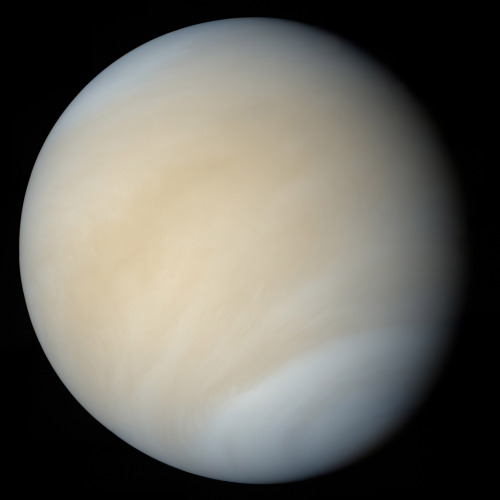
On this day, but in 1974 the NASA spacecraft Mariner 10 made its closest approach to Venus.
Credit: NASA / Mariner 10

So NASA won the internet today…
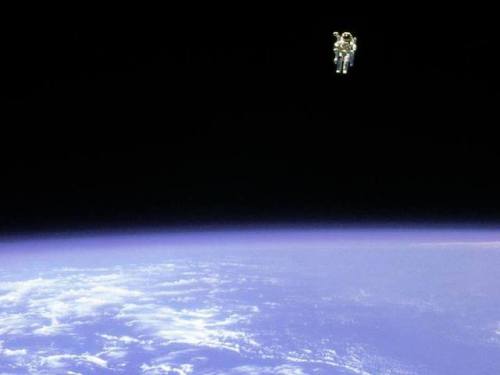
Meet Bruce McCandless. He was a bit of a bad-ass. In 1984, Bruce was aboard the Challenger Space Shuttle and became the first human to walk in space without a safety line. By utilising a nitrogen propelled Manned Maneuvering Unit (MMU), he stepped free from Challenger into the blackness of space for a 90-minute space walk and wandered as far as 97 meters from the ship. The result is this amazing image which captures ingenuity, innovation and most certainly bravery.
Bruce McCandless died yesterday at the age of 80.
-Jean Image Credit: NASA

Bruce McCandless II (June 8, 1937 – December 21, 2017)
Rest In Peace
Can u post pics of earth 🌍

The Blue Marble—Earth as seen by Apollo 17 in 1972
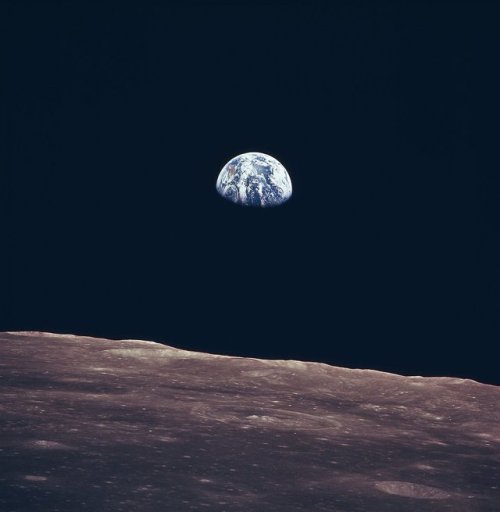
This incredible image of the Earth rise was taken during lunar orbit by the Apollo 11 mission crew in July of 1969. The first manned lunar mission, Apollo 11 launched aboard a Saturn V launch vehicle from the Kennedy Space Center, Florida on July 16, 1969 and safely returned to Earth on July 24, 1969.

This image taken by an astronaut aboard Space Shuttle mission STS-103 shows a panoramic view of Earth at moonrise.

In this rare image taken on July 19, 2013, the wide-angle camera on NASA’s Cassini spacecraft has captured Saturn’s rings and our planet Earth and its moon in the same frame.
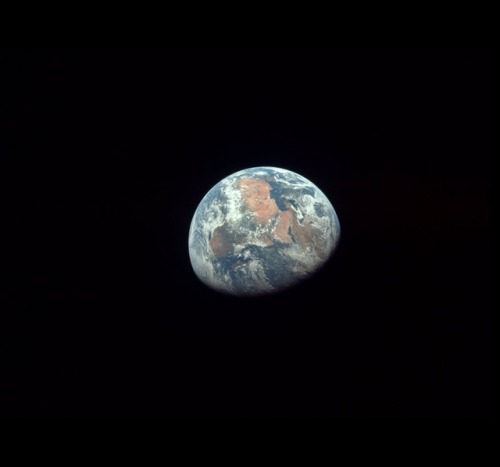
Earth as seen by Apollo 11 astronauts at the beginning of the third day of TLC

A view of the Apollo 11 lunar module “Eagle” as it returned from the surface of the moon to dock with the command module “Columbia”. A smooth mare area is visible on the Moon below and a half-illuminated Earth hangs over the horizon. The lunar module ascent stage was about 4 meters across. Command module pilot Michael Collins took this picture just before docking at 21:34:00 UT (5:34 p.m. EDT) 21 July 1969.

This panorama featuring Earth’s horizon and clouds over the South Pacific Ocean, complemented with a “tiny” distant moon (upper right), was photographed by one of the Expedition 36 crew members aboard the International Space Station.

The Sun from the Internation Space Station

images: NASA/JPL
To see more images and posts about the Earth click here.









Comparison of the planets of the solar system, Pluto and Sun in relation to the earth.
Images: commons.wikimedia (Sun: Alan Friedman)
“Anyone who has never made a mistake has never tried anything new.” - Albert Einstein
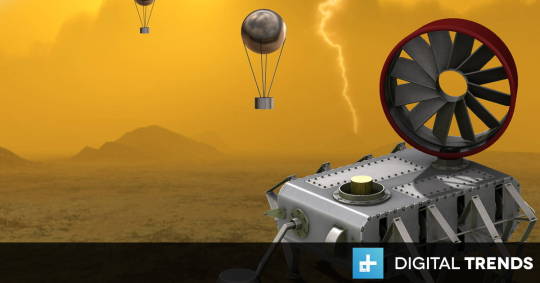
NASA is developing a rover for Venus that could survive the planet’s tumultuous atmosphere.

A Clockwork Rover for Venus
A good watch can take a beating and keep on ticking. With the right parts, can a rover do the same on a planet like Venus?
A concept inspired by clockwork computers and World War I tanks could one day help us find out. The design is being explored at NASA’s Jet Propulsion Laboratory in Pasadena, California.
The Automaton Rover for Extreme Environments (AREE) is funded for study by the NASA Innovative Advanced Concepts program. The program offers small grants to develop early stage technology, allowing engineers to work out their ideas.
AREE was first proposed in 2015 by Jonathan Sauder, a mechatronics engineer at JPL. He was inspired by mechanical computers, which use levers and gears to make calculations rather than electronics.
By avoiding electronics, a rover might be able to better explore Venus. The planet’s hellish atmosphere creates pressures that would crush most submarines. Its average surface temperature is 864 degrees Fahrenheit (462 degrees Celsius), high enough to melt lead.
Steampunk computing
Mechanical computers have been used throughout history, most often as mathematical tools like adding machines. The most famous might be Charles Babbage’s Difference Engine, a 19th century invention for calculating algebraic equations. The oldest known is the Antikythera mechanism, a device used by ancient Greeks to predict astronomical phenomena like eclipses.
Mechanical computers were also developed as works of art. For hundreds of years, clockwork mechanisms were used to create automatons for wealthy patrons. In the 1770s, a Swiss watchmaker named Pierre Jaquet-Droz created “The Writer,” an automaton that could be programmed to write any combination of letters.
Sauder said these analog technologies could help where electronics typically fail. In extreme environments like the surface of Venus, most electronics will melt in high temperatures or be corroded by sulfuric acid in the atmosphere.
“Venus is too inhospitable for kind of complex control systems you have on a Mars rover,” Sauder said. “But with a fully mechanical rover, you might be able to survive as long as a year.”
Wind turbines in the center of the rover would power these computers, allowing it to flip upside down and keep running. But the planet’s environment would offer plenty of challenges.
The extreme planet
No spacecraft has survived the Venusian surface for more than a couple hours.
Venus’ last visitors were the Soviet Venera and Vega landers. In the 1970s and 1980s, they sent back a handful of images that revealed a craggy, gas-choked world.
“When you think of something as extreme as Venus, you want to think really out there,” said Evan Hilgemann, a JPL engineer working on high temperature designs for AREE. “It’s an environment we don’t know much about beyond what we’ve seen in Soviet-era images.”
Sauder and Hilgemann are preparing to bake mechanical prototypes, allowing them to study how thermal expansion could affect their moving parts. Some components of the Soviet landers had actually been designed with this heat expansion in mind: their parts wouldn’t work properly until they were heated to Venusian temperatures.
Tank treads for Venus
AREE includes a number of other innovative design choices.
Mobility is one challenge, considering there are so many unknowns about the Venusian surface. Sauder’s original idea was inspired by the “Strandbeests” created by Dutch artist Theo Jansen. These spider-like structures have spindly legs that can carry their bulk across beaches, powered solely by wind.
Ultimately, they seemed too unstable for rocky terrain. Sauder started looking at World War I tank treads as an alternative. These were built to roll over trenches and craters.
Another problem will be communications. Without electronics, how would you transmit science data? Current plans are inspired by another age-old technology: Morse code.
An orbiting spacecraft could ping the rover using radar. The rover would have a radar target, which if shaped correctly, would act like “stealth technology in reverse,” Sauder said. Stealth planes have special shapes that disperse radar signals; Sauder is exploring how to shape these targets to brightly reflect signals instead. Adding a rotating shutter in front of the radar target would allow the rover to turn the bright, reflected spot on and off, communicating much like signal lamps on Navy ships.
Now in its second phase of NIAC development, the JPL team is selecting parts of the AREE concept to be refined and prototyped. Team members hope to flesh out a rover concept that will eventually be able to study the geology of Venus and perhaps drill a few samples.

Emil Ivanov - When Venus Rises with the Sun, 2012. (View across the Black Sea on June 6 finds Venus rising with the Sun)
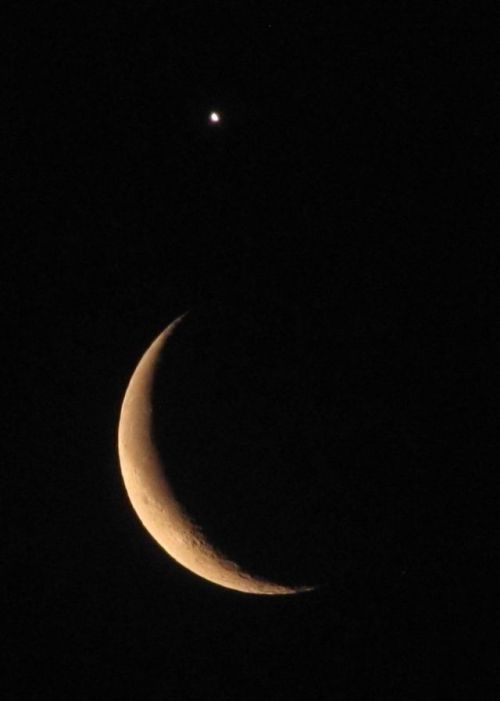
Moon with Venus


Transit of Venus in 2012
Credit: NASA / SDO

I’ve finally got round to continuing with my series of photos about the planets of the solar system! Next on my list is Venus. Venus is the second closest planet to our home star and notable for many strange oddities. For example, it has a rotational period of 243 days, whilst a year takes just 225 days. It has a diameter of ~12100km, making it very similar in size to Earth. It is often compared to Earth as its so-called twin planet, which may be true for aspects such as mass, size and proximity to the sun, but for almost everything else, they are vastly different.
Weiterlesen

Venus over Bioluminescent Algae

TODAY IN HISTORY: Planet Venus, observed by NASA’s Pioneer 12 space probe on February 26, 1979.

On this day, but in 1974 the NASA spacecraft Mariner 10 made its closest approach to Venus.
Credit: NASA / Mariner 10







I do love me a good artist drawing of the Solar System. This time with moons and more facts! Art by Vadim Sadovski.

"NASA Langley researchers want to get a better idea about conditions on our nearest planetary neighbor, Venus, so they have come up with HAVOC or a High Altitude Venus Operational Concept – a lighter-than-air rocket ship that would help send two astronauts on a 30-day mission to explore the planet’s atmosphere. Exploration of Venus is a challenge not only because its smog-like sulfuric acid-laced atmosphere, but also its extremely hot surface temperature and extremely high air pressure on the surface."
"The video shows a human mission that’s part of a multi-phase campaign to explore and potentially settle Venus. Before the mission in the video occurred, there would be similar robotic missions to test the technologies and better understand the atmosphere. Eventually, a short duration human mission would allow us to gain experience having humans live at another world, with the hope that it would someday be possible to live in the atmosphere permanently (hinted at in the closing shot of the video)."